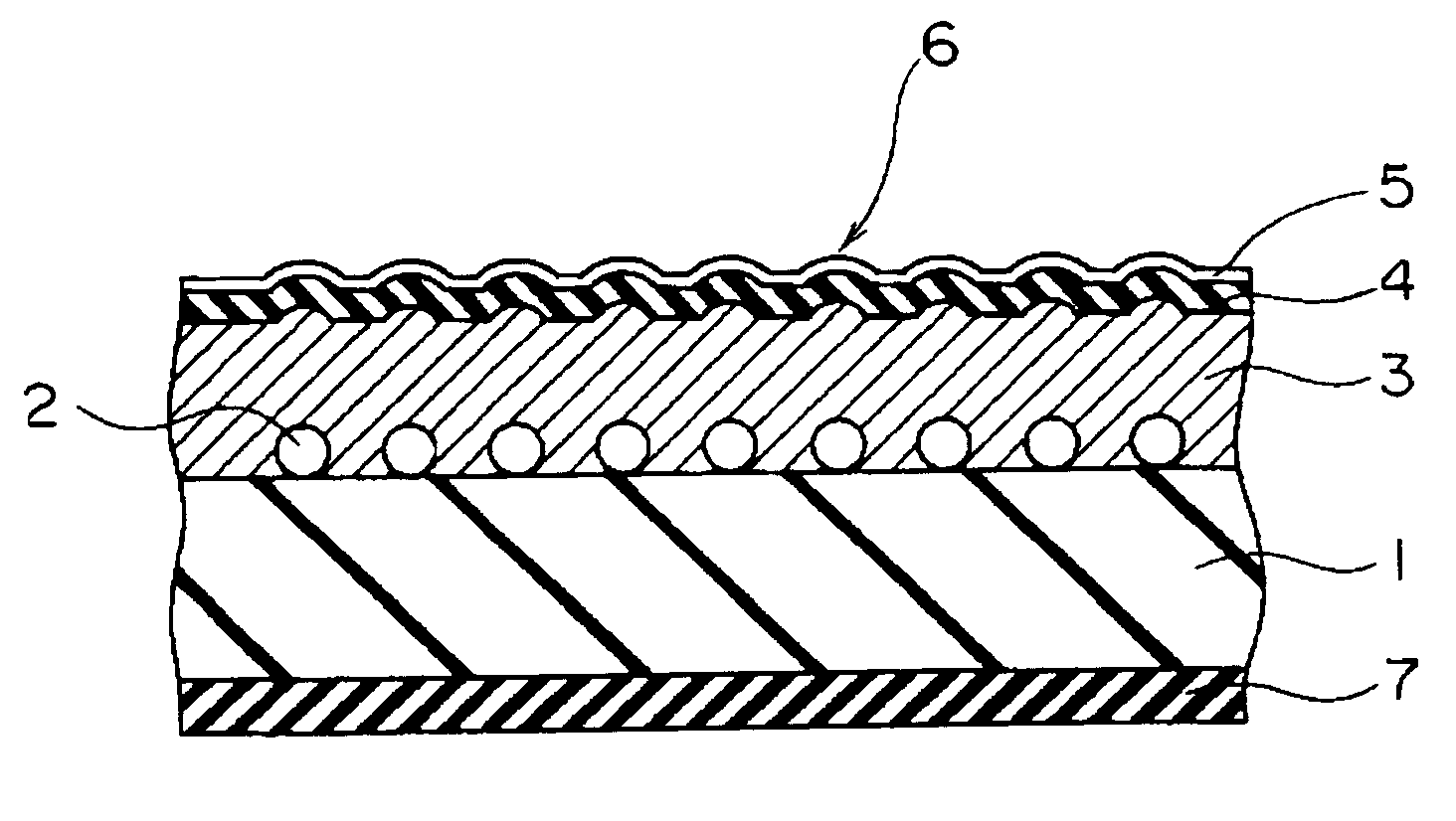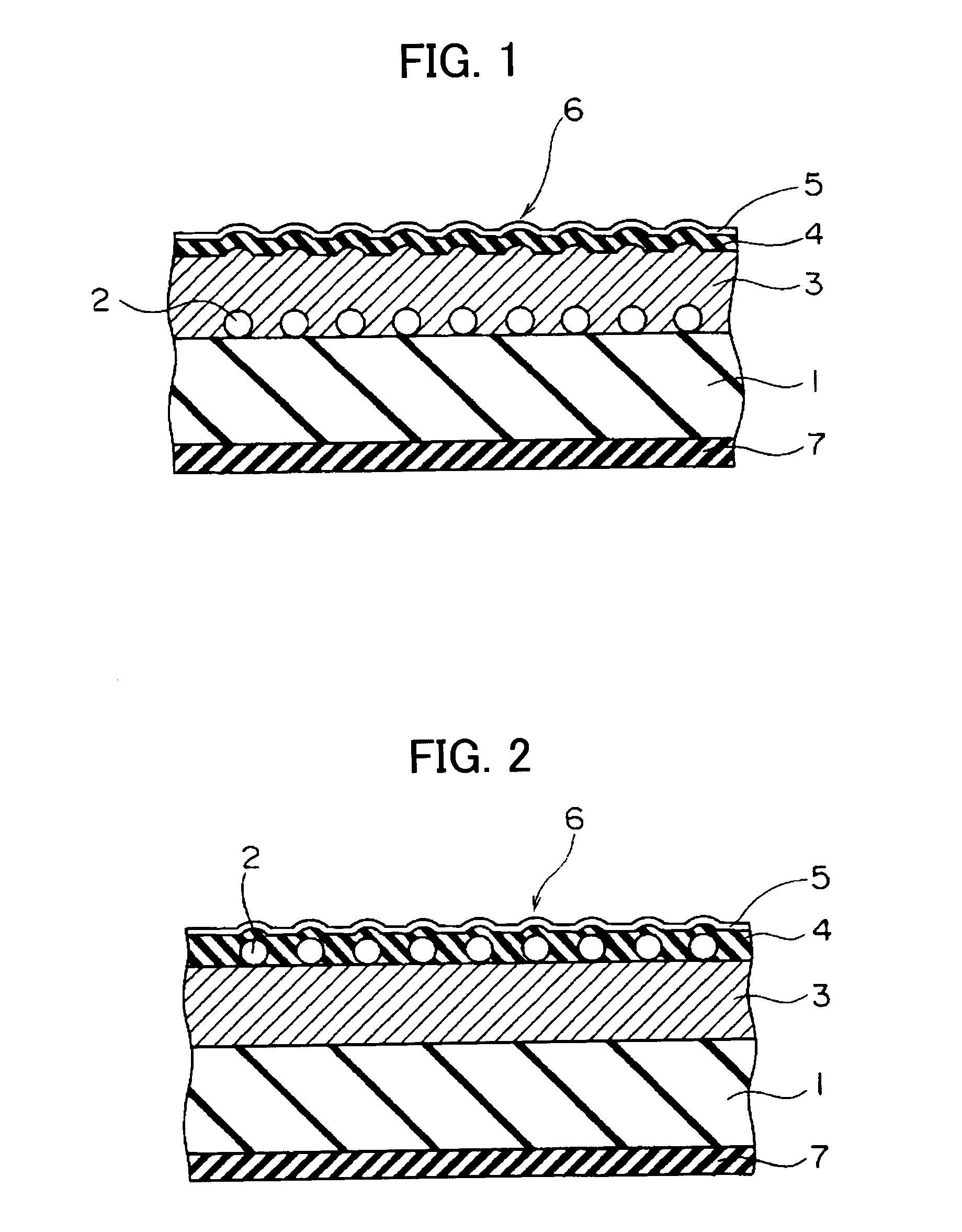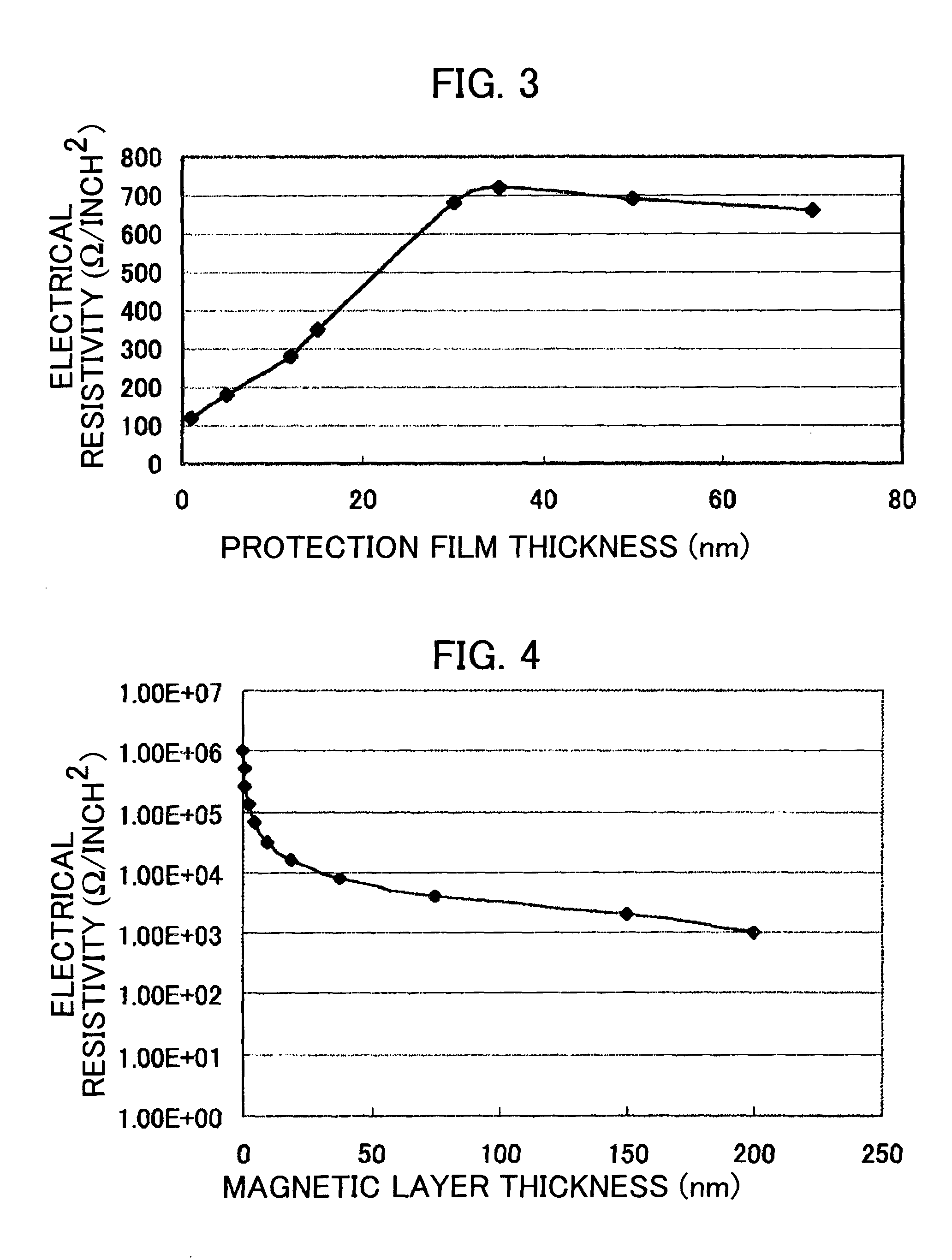Cleaning tape with surface protrusions formed by particles of predetermined size/density and non-magnetic metal evaporated film of predetermined thickness
- Summary
- Abstract
- Description
- Claims
- Application Information
AI Technical Summary
Benefits of technology
Problems solved by technology
Method used
Image
Examples
example 1
[0087]In example 1, a cleaning tape in which the particles 2 of the cleaning tape shown in FIG. 1 is removed and which has no surface protrusions 2 was prepared and measurements of the electrical resistivity are shown. FIG. 3 shows the relationship between the thickness of a carbon protection film serving as the inorganic protection film 4 and the electrical resistivity of the surface of the cleaning tape. When the thickness of the magnetic layer is set at 150 nm and the thickness of the carbon protection film is varied, the electrical resistivity is largest when the thickness of the carbon protection film is 35 nm.
[0088]With this particular thickness (35 nm) of the carbon protection film, measurement results of the electrical resistivity as a function of the thickness of the magnetic layer 3 are shown in FIG. 4. As shown in FIG. 4, electrical resistivity decreases as the magnetic layer 3 becomes thicker. Once the magnetic layer 3 becomes thinner than about 30 nm, electrical resisti...
example 2
[0091]In examples 2 to 4 below, as shown in FIG. 1, a carbon protection film was formed as the inorganic protection film 4 over the magnetic layer serving as the metal evaporated film 3. The carbon protection film was formed through sputtering. In example 2, the particle diameter of the particles 2 was 25 nm±5 nm, in example 3, the particle diameter of the particles 2 was made smaller (15 nm±5 nm), and in example 4, the particle diameter of the particles 2 was made larger (35 nm±5 nm).
[0092]Measurement results obtained with the cleaning tape of example 2 will be described below with reference to FIG. 5 to FIG. 9. FIG. 5 shows the results of analyzing the density of the surface protrusions (i.e., particle density) at which sufficient cleaning effects can be obtained when the thickness of the magnetic layer 3 is 50 nm and the thickness of the carbon protection film is 10 nm. The particles 2 of a particle diameter of 25 nm±5 nm were arranged on the non-magnetic substrate 1 to form prot...
example 3
[0111]Cleaning tapes were prepared in a manner similar to example 2 above except in that the particle diameter of the particles 2 was changed to 15 nm±5 nm and various measurements were taken. The tolerable range of head wear, the method of evaluating cleaning effects, and the like were the same as example 2 above. FIG. 10 to FIG. 14 show measurement results when particles of a particle diameter of 15 nm±5 nm were used.
[0112]FIG. 10 shows the results of analyzing the density of the surface protrusions that provide for sufficient cleaning effects when the thickness of the magnetic layer 3 is 50 nm and the thickness of the carbon protection film is 10 nm. According to the reference cleaning time mentioned above (about 10 seconds or shorter), sufficient cleaning effects were achieved when the density of the particles was 1000×104 per mm2 or higher. Also, as long as the density of the particles was 500×104 per mm2 or higher, the cleaning time was less than 20 seconds, and generally subs...
PUM
 Login to View More
Login to View More Abstract
Description
Claims
Application Information
 Login to View More
Login to View More - R&D
- Intellectual Property
- Life Sciences
- Materials
- Tech Scout
- Unparalleled Data Quality
- Higher Quality Content
- 60% Fewer Hallucinations
Browse by: Latest US Patents, China's latest patents, Technical Efficacy Thesaurus, Application Domain, Technology Topic, Popular Technical Reports.
© 2025 PatSnap. All rights reserved.Legal|Privacy policy|Modern Slavery Act Transparency Statement|Sitemap|About US| Contact US: help@patsnap.com



